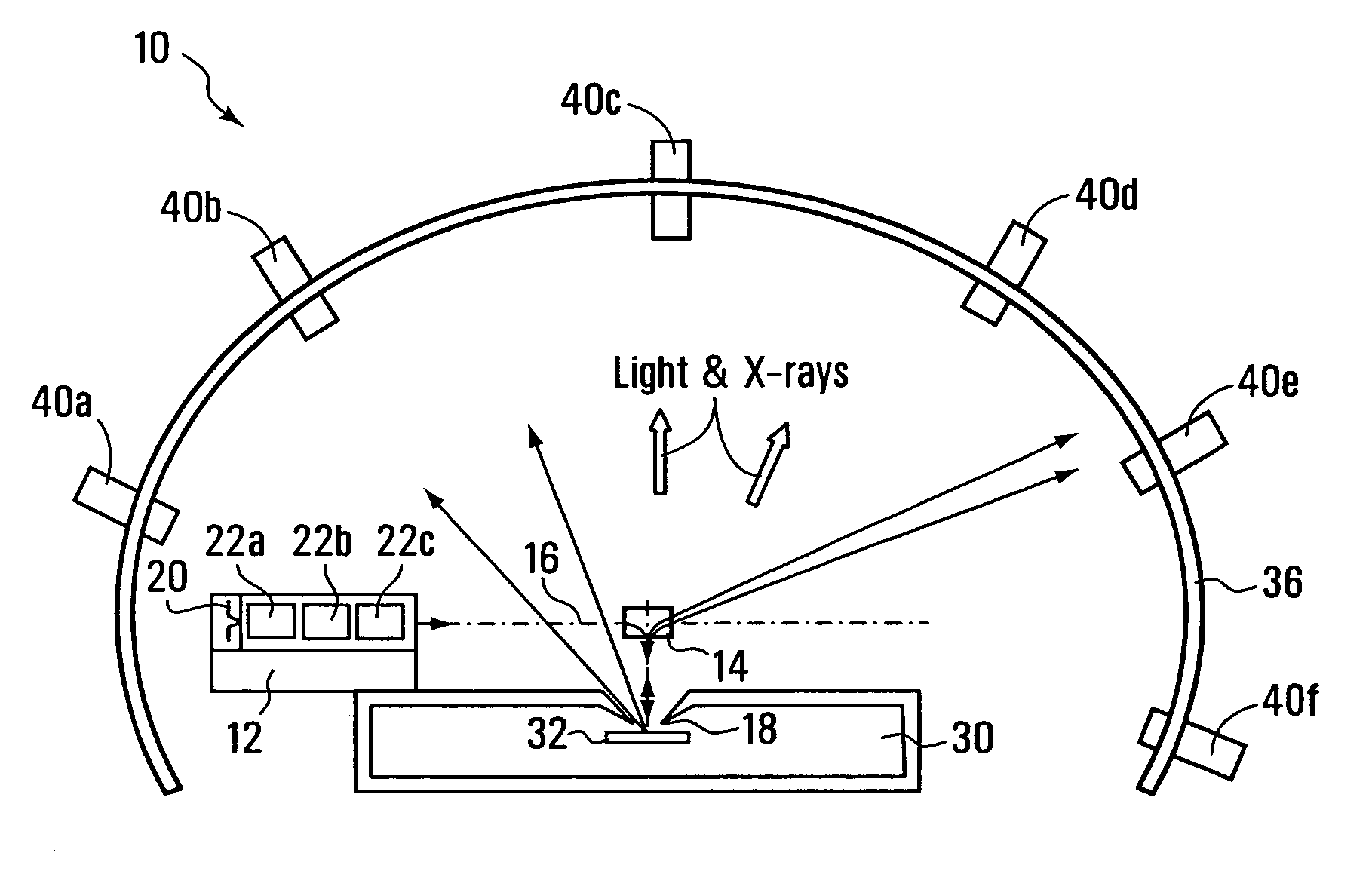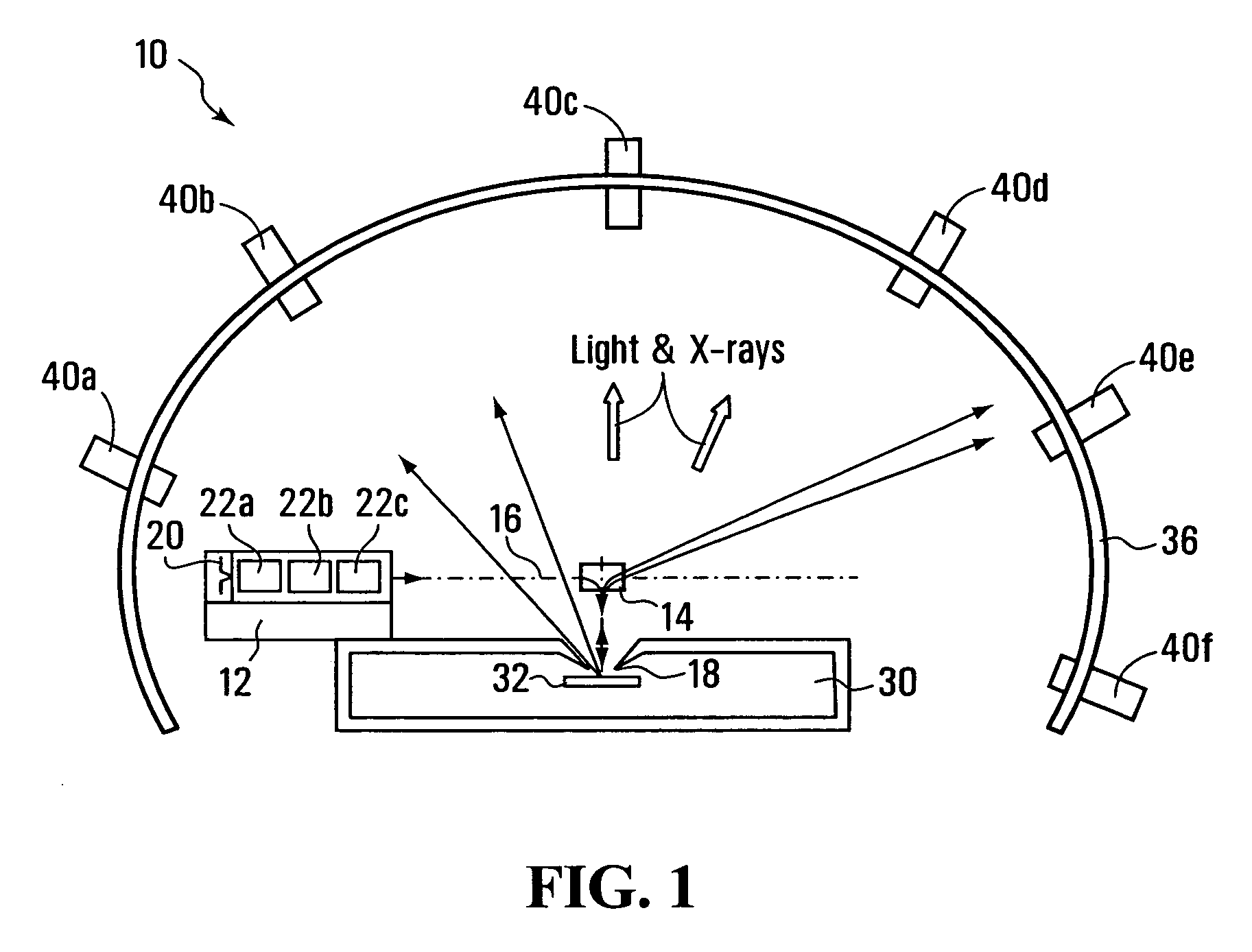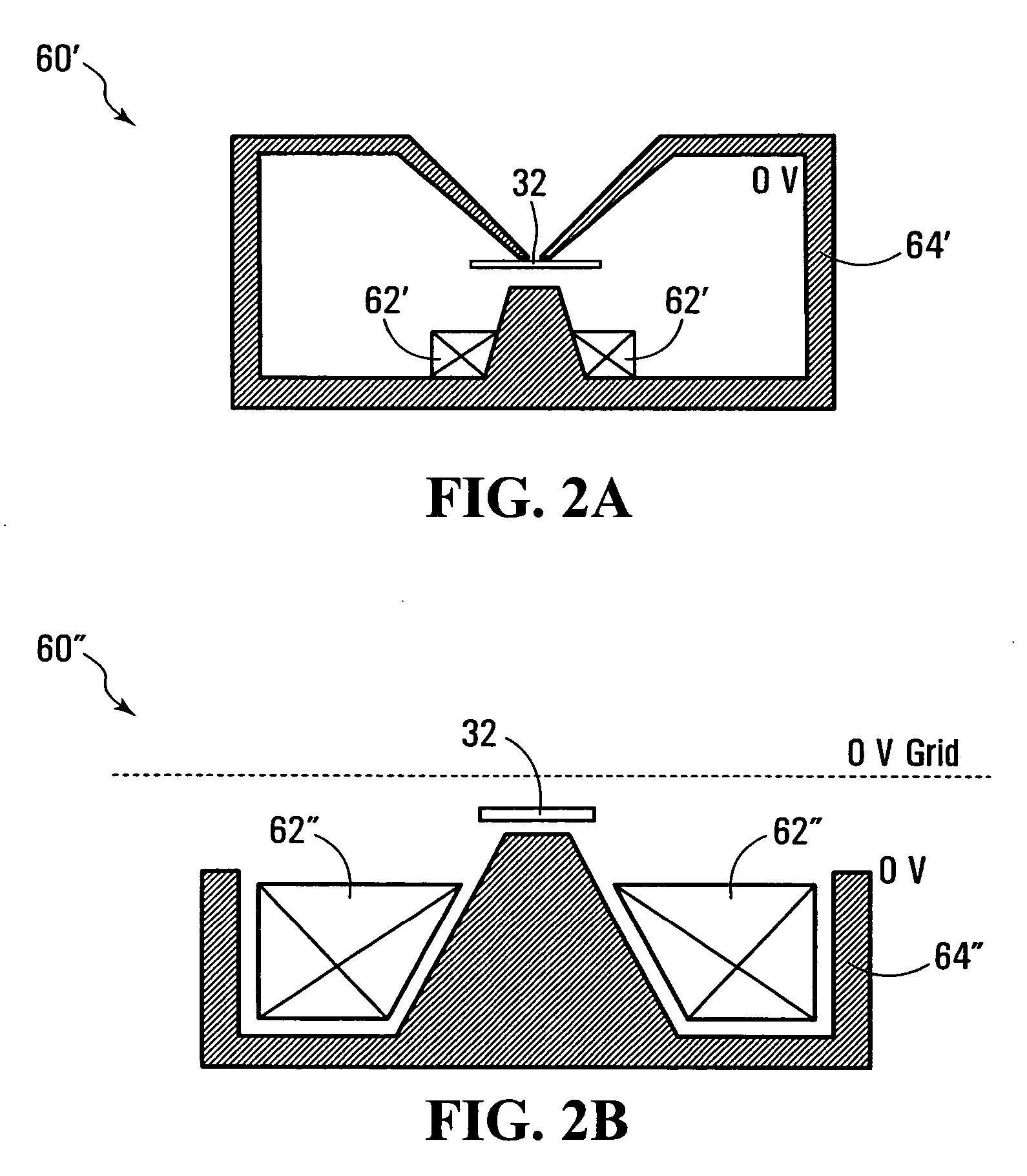Scanning electron microscope
a scanning electron microscope and electron microscope technology, applied in the direction of material analysis using wave/particle radiation, instruments, nuclear engineering, etc., can solve the problems of limited to a few routinely used add-ons, difficult detection and analysis, and little space in this design for mounting detectors and spectrometers, and achieve high transport efficiency
- Summary
- Abstract
- Description
- Claims
- Application Information
AI Technical Summary
Benefits of technology
Problems solved by technology
Method used
Image
Examples
Embodiment Construction
[0028] SEM 10, exemplary of an embodiment of the present invention, is schematically depicted in FIG. 1. SEM 10 includes an SEM column 12, placed on its side, and a magnetic separator 14. Magnetic separator 14 guides an electron beam 16 emitted by SEM column 12, to change its direction of travel from generally horizontal to generally vertical. A primary electron beam 16 is directed by magnetic separator 14, through an objective lens 18 onto a specimen 32. In the depicted embodiment objective lens 18 forms part of a combined collection chamber / objective lens 30.
[0029] SEM column 12 includes conventional SEM components, and includes an electron gun 20, a series of electromagnetic lenses 22a, 22b, 22c (collectively lenses 22), scanning coils, stigmators, (not specifically illustrated) and the like. However, final lens 22c is no longer the objective lens of the microscope. Instead, the final lens 22c of SEM column 12 is used as an auxiliary lens whose main purpose is to focus beam 16 o...
PUM
| Property | Measurement | Unit |
|---|---|---|
| angle | aaaaa | aaaaa |
| angles | aaaaa | aaaaa |
| angle | aaaaa | aaaaa |
Abstract
Description
Claims
Application Information
 Login to View More
Login to View More - R&D
- Intellectual Property
- Life Sciences
- Materials
- Tech Scout
- Unparalleled Data Quality
- Higher Quality Content
- 60% Fewer Hallucinations
Browse by: Latest US Patents, China's latest patents, Technical Efficacy Thesaurus, Application Domain, Technology Topic, Popular Technical Reports.
© 2025 PatSnap. All rights reserved.Legal|Privacy policy|Modern Slavery Act Transparency Statement|Sitemap|About US| Contact US: help@patsnap.com



